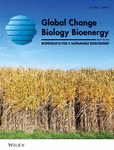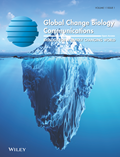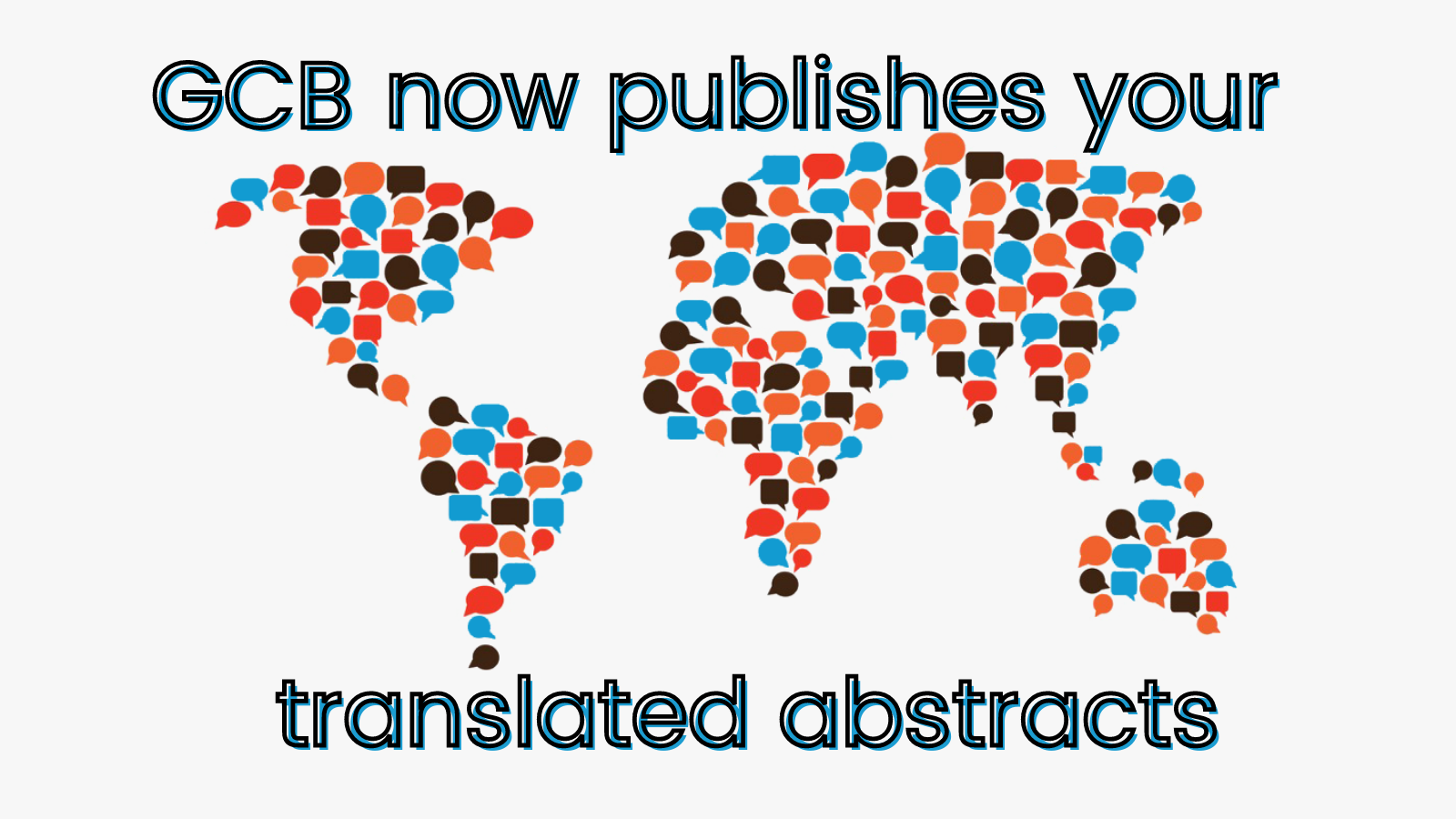Journal list menu
Export Citations
Download PDFs
Articles
Microbiomes as Modulators of Human and Planetary Health: A Relational and Cross-Scale Perspective
- First Published: 03 April 2025
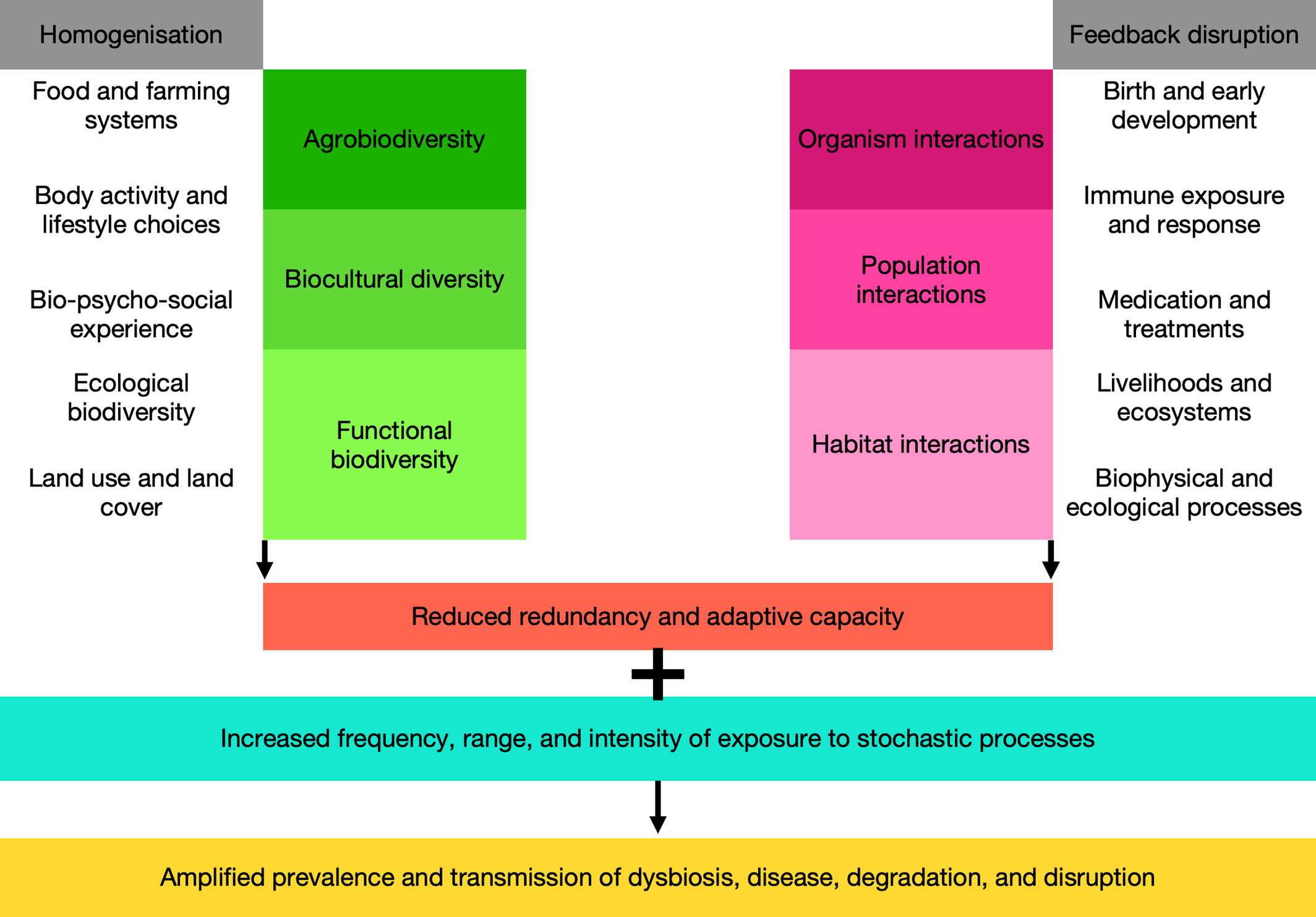
The biological diversity of the human microbiome can be considered analogous to ecological diversity, and environmental change impacts this biodiversity in interconnected ways from micro- to macro- level. Holistic approaches using a microbiodiversity lens can have multiple benefits for human health and well-being as well as environmental health and safety. Such approaches will restore connectivity and function in production, growth, development, and regulation of social-ecological-economic systems.
Zoonotic Host Richness in the Global Wildland–Urban Interface
- First Published: 05 February 2025
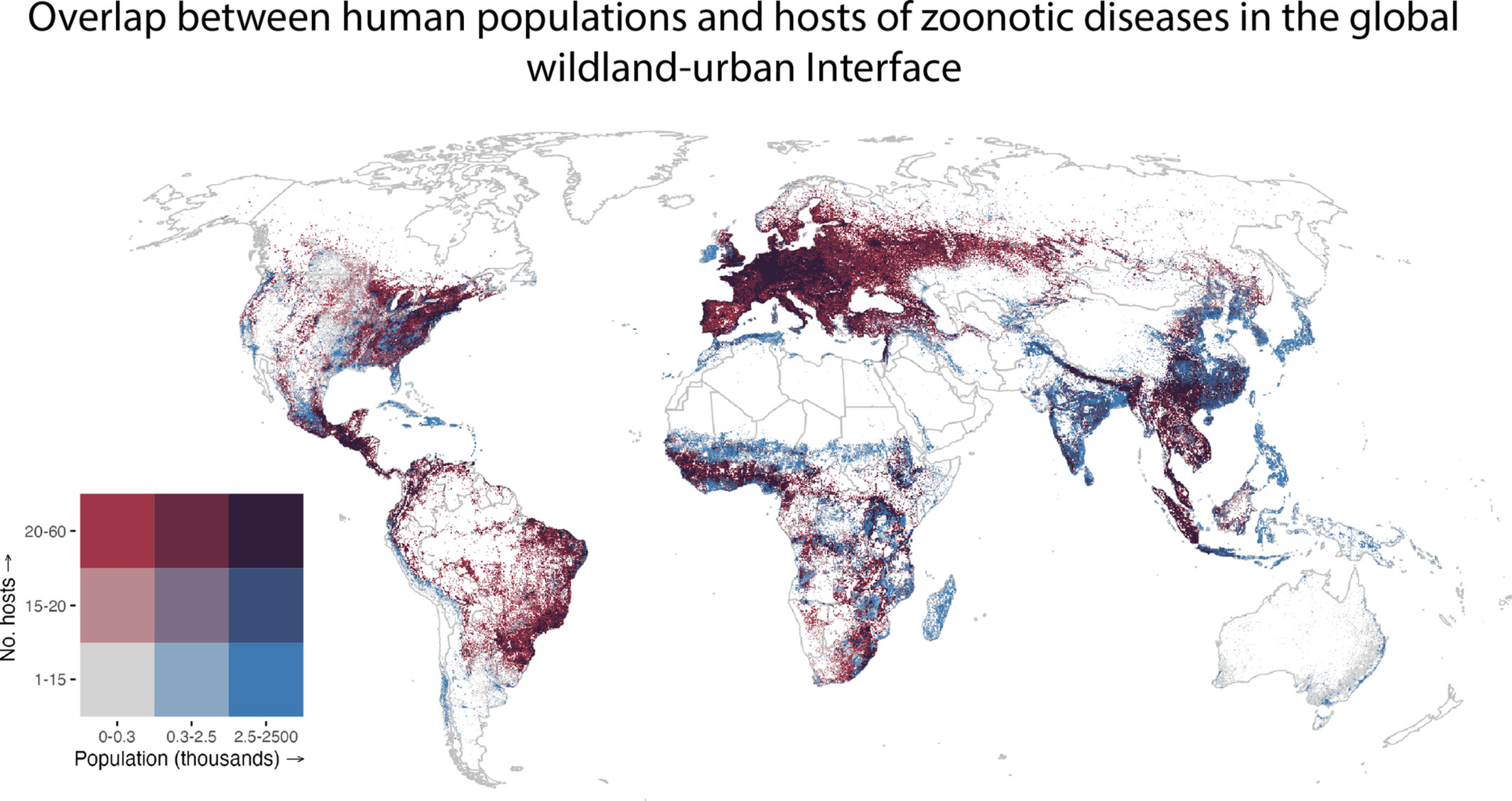
In the wildland–urban interface (WUI), where human settlements abut or intermix with wildlands, people may encounter animals that host zoonotic pathogens, which can spillover to cause human disease. We map the distribution of zoonotic hosts in the global WUI and show that large populations in tropical low–middle-income countries (LMICs) are potentially exposed to diverse communities of hosts. Human populations in LMICs may face the double threat of exposure to hosts and vulnerability to disease, exacerbated by poverty, inadequate housing, and lack of easily accessible healthcare.
How Much Warming Can Mosquito Vectors Tolerate?
- First Published: 03 December 2024
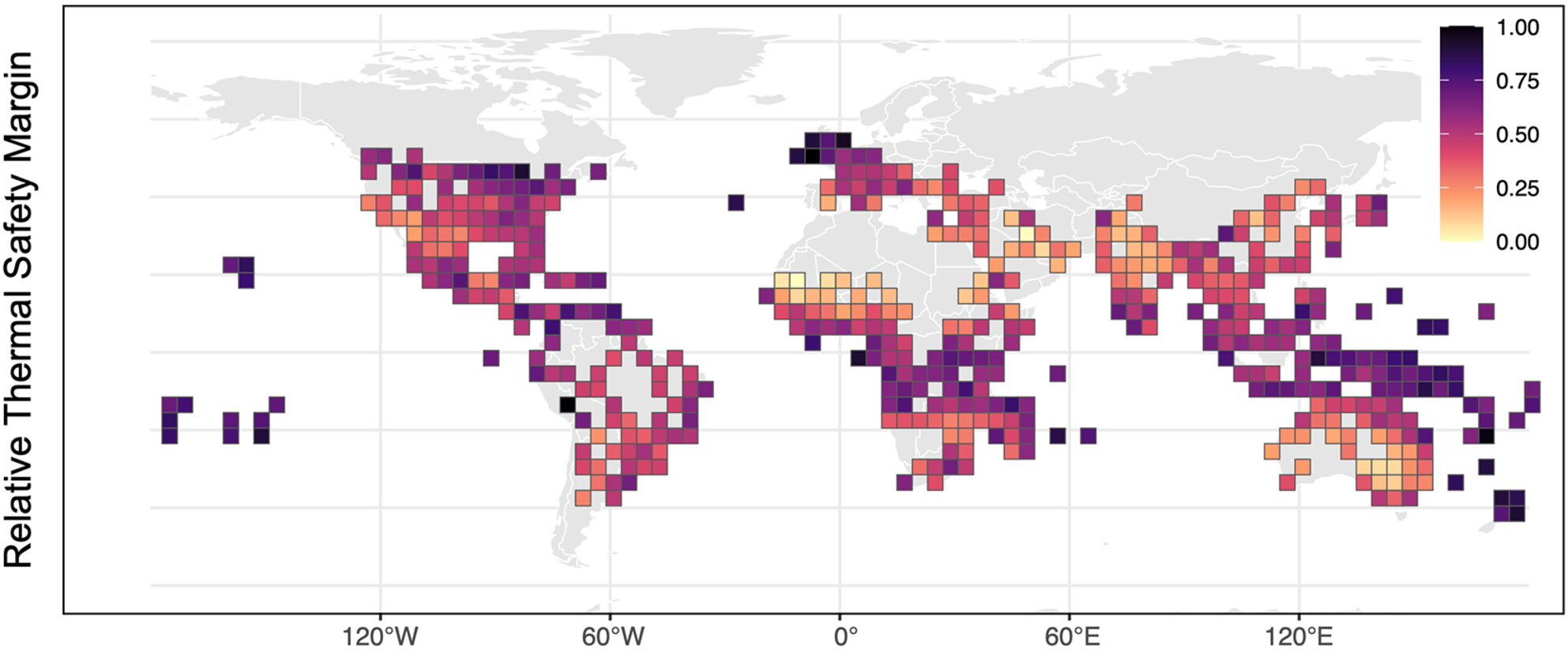
We investigated how much heat stress major mosquito vector species currently experience across their ranges. We found that heat stress is highest in the subtropics but that overall, most species have a buffer between current temperatures and their upper thermal limits as long as they can behaviorally thermoregulate (seek shade).
Infectious disease responses to human climate change adaptations
- First Published: 22 August 2024
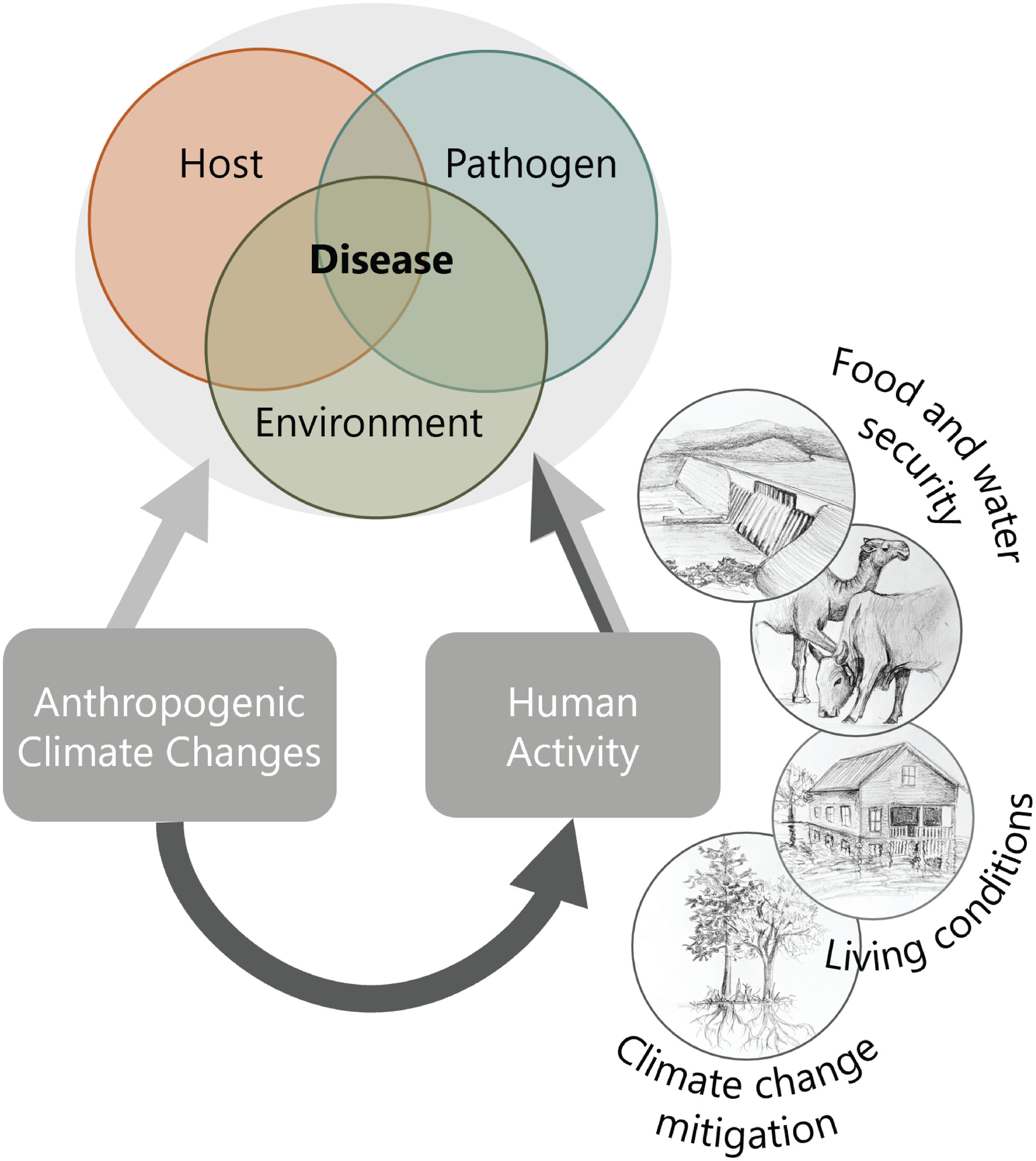
Climate change directly affects infectious diseases, but human adaptations—such as changes in water and food production, shifts in movement and habitats, and greenhouse gas reduction efforts—also influence disease spread. This paper examines how these responses can either increase or decrease disease risks. Our review exposes a significant gap in quantitative studies and the integration of socioeconomic, climate, and epidemiological research. We highlight several ways that climate change adaption and mitigation actions alter the hosts, pathogens, and environment across disease systems, and we identify key research directions to advance understanding.
Climate change could fuel urinary schistosomiasis transmission in Africa and Europe
- First Published: 06 August 2024
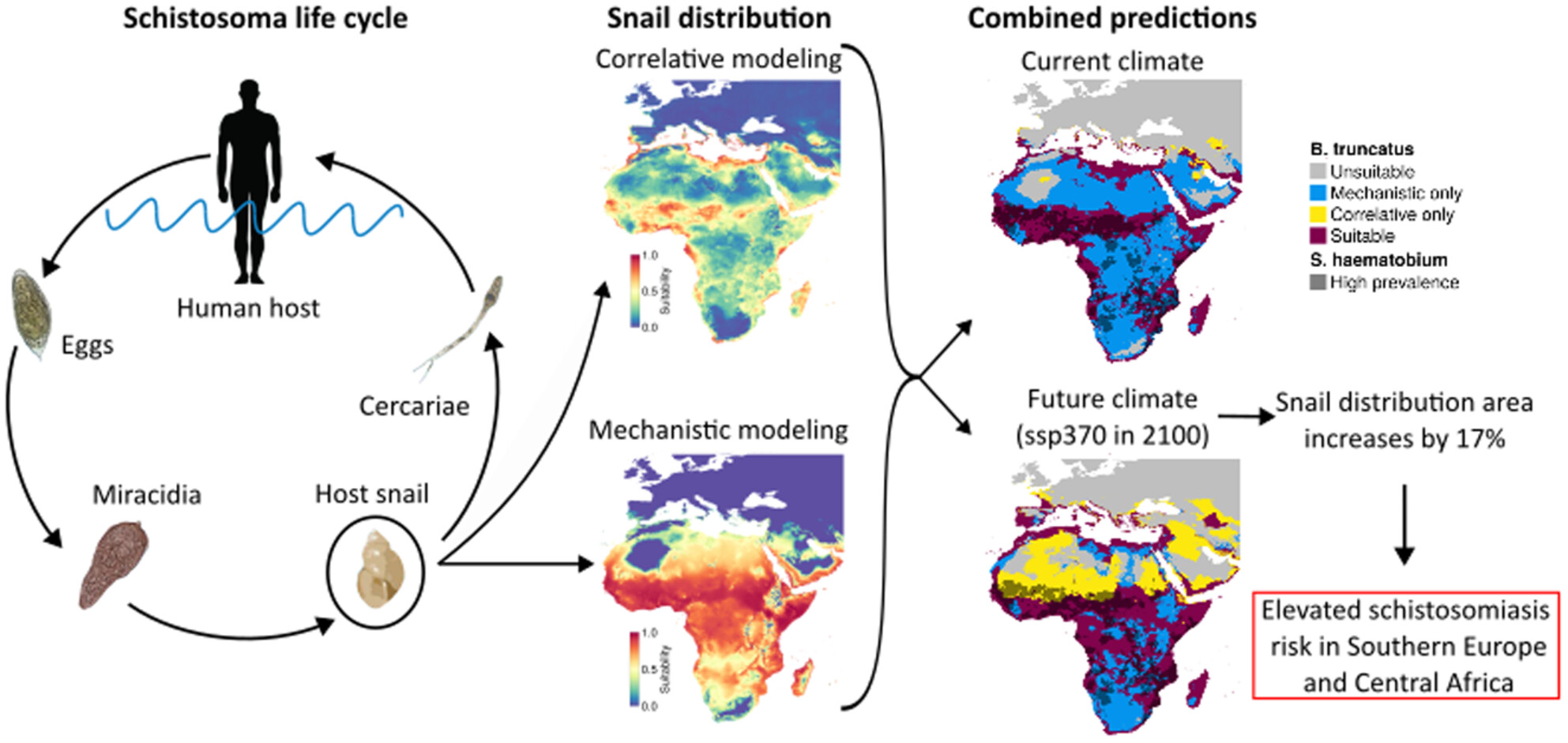
Schistosomiasis is a parasitic disease that affects over 200 million people worldwide. The disease is linked to areas that are climatically suitable for its freshwater intermediate snail hosts. To predict the potential impact of climate change on the snail, we use snail life-history data obtained from lab-based temperature experiments and snail occurrence data. The models show a net increase in future suitable habitat of up to 17% by the end of the century. This expansion could increase the risk of schistosomiasis transmission, especially in Central Africa and Southern Europe.
Population-specific responses to developmental temperature in the arboviral vector Aedes albopictus: Implications for climate change
- First Published: 07 March 2024
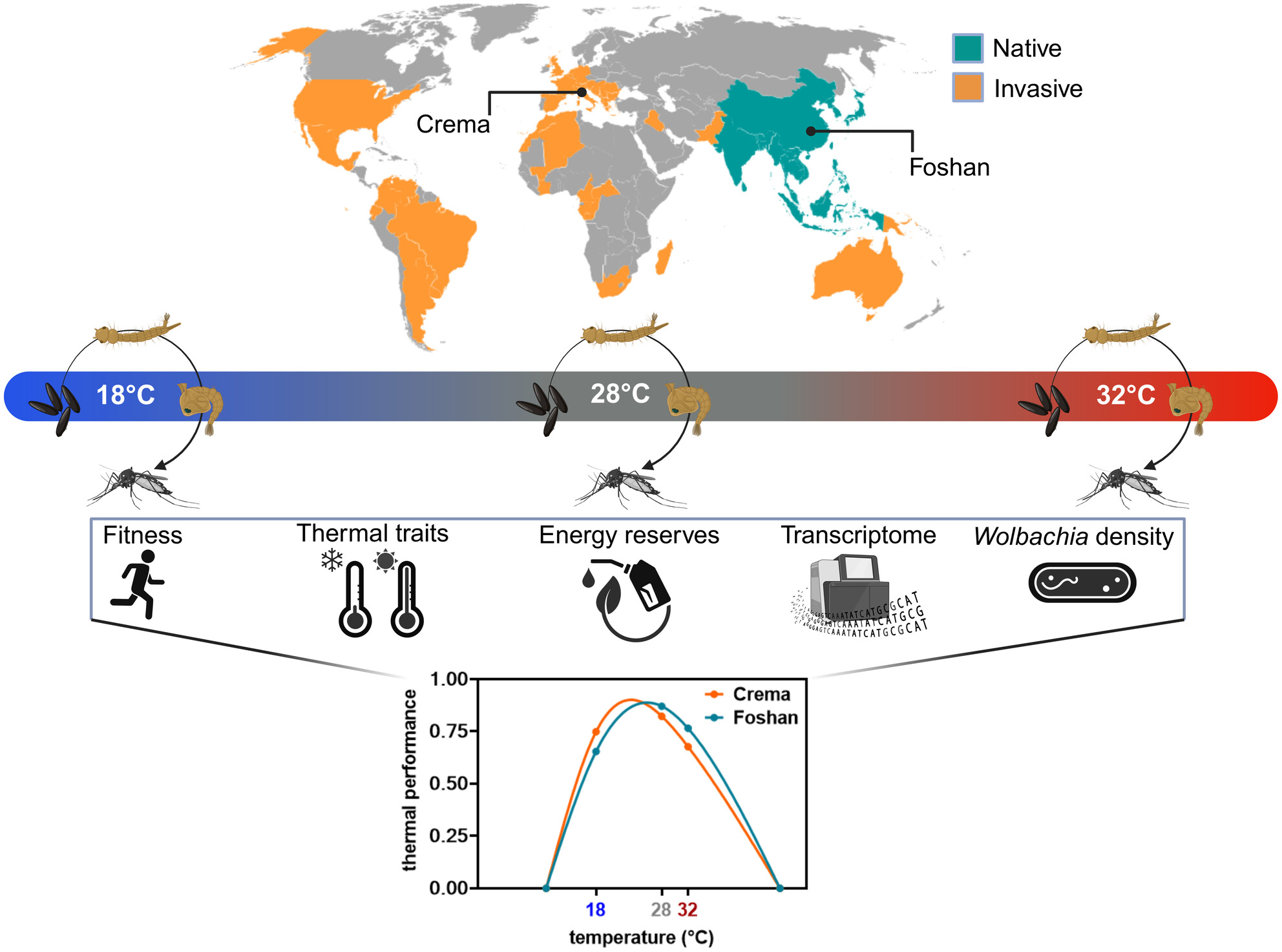
We show that developmental temperature impacts Aedes albopictus biology, including its fitness and its physiology. We further show that development at 32°C is perceived as a stress, while development at 18°C constrains Wolbachia proliferation. Overall, our data support local phenotypic thermal adaptation in Ae. albopictus.
Phenotypic adaptation to temperature in the mosquito vector, Aedes aegypti
- First Published: 27 November 2023
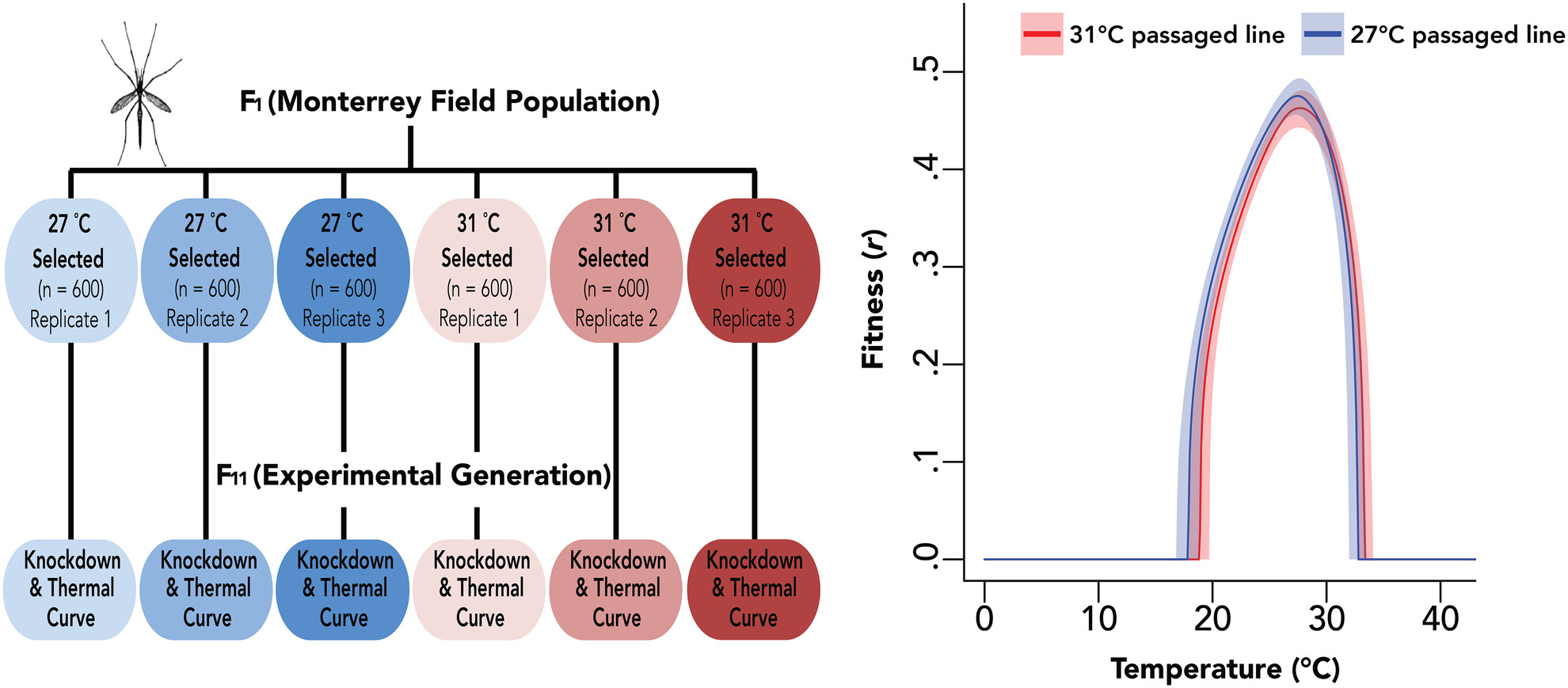
How climate affects the dynamics and distribution of mosquito-borne diseases is of considerable public health relevance. Models often assume the relationship between temperature and transmission is fixed for mosquito species. We challenge this assumption with evidence for local thermal adaptation in Aedes mosquitoes, the primary vector of dengue virus. We show standing variation in thermal sensitivity between populations of mosquitoes, together with the potential for rapid change in fitness in response to environmental temperature. Such effects will increase variation in the expected impact of climate and challenge the utility of models to predict the effects of climate change on mosquito-borne disease transmission.
Projecting spatiotemporal dynamics of severe fever with thrombocytopenia syndrome in the mainland of China
- First Published: 17 October 2023
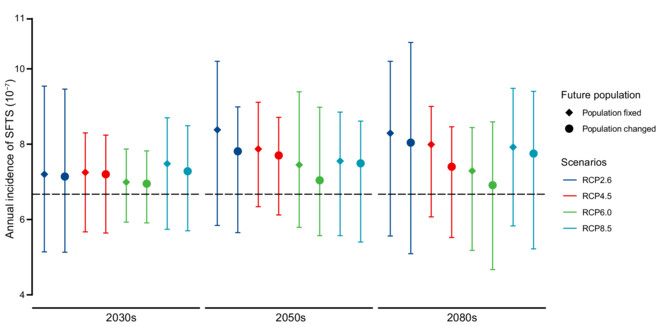
We use an integrated multi-model, multi-scenario framework to assess the impact of global climate change on SFTS disease in the mainland of China. The SFTS incidence in three time periods (2030–2039, 2050–2059, and 2080–2089) is predicted to be increased as compared to the 2010s in the context of various RCPs. The projected spatiotemporal dynamics of SFTS will be heterogeneous across provinces. Notably, we predict possible outbreaks in Xinjiang and Yunnan in the future, where only sporadic cases have been reported previously. These findings highlight the need for population awareness of SFTS in endemic regions, and enhanced monitoring in potential risk areas.
Exposure to ultraviolet-B radiation increases the susceptibility of mosquitoes to infection with dengue virus
- First Published: 10 August 2023
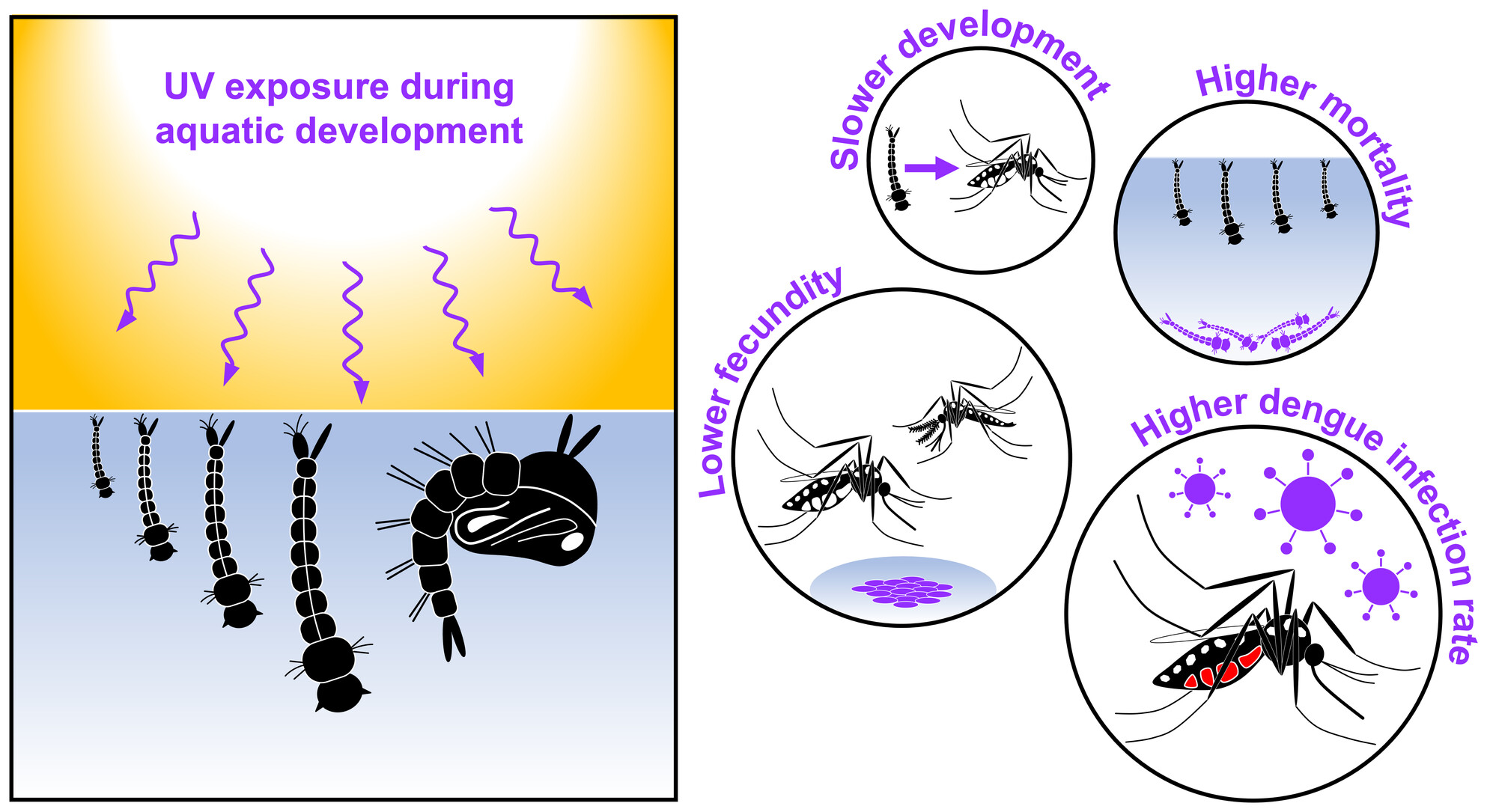
Ultraviolet-B radiation (UVBR) is predicted to increase in the tropics by 2100, but the effect this will have on insect disease vectors and pathogen transmission is unknown. We show that UVBR is detrimental to the fitness of the mosquito Aedes aegypti and increases their susceptibility to infection with dengue virus. With the potential to reduce mosquito populations and weaken their immunity, increased tropical UVBR may have consequences for the socioeconomic burden of arboviruses.
Current and future distribution of a parasite with complex life cycle under global change scenarios: Echinococcus multilocularis in Europe
- First Published: 23 February 2023
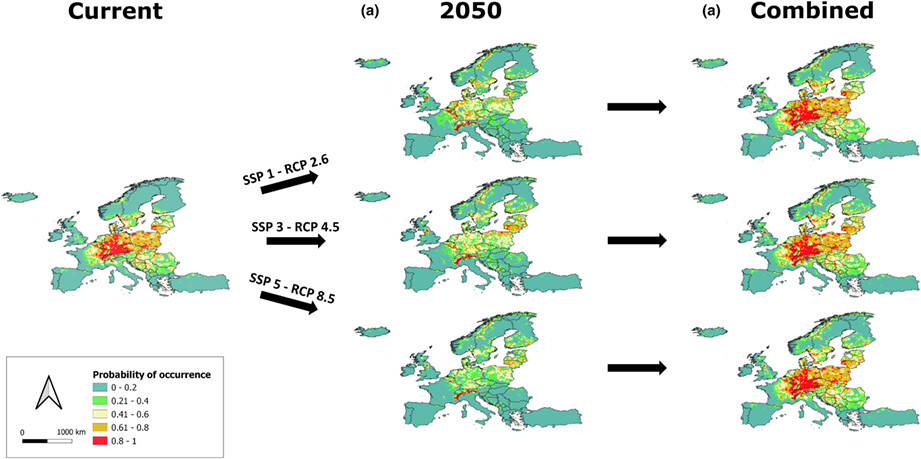
We described the ecological niche of Echinococcus multilocularis, a zoonotic cestode with a complex life cycle, identifying four major drivers of its distribution (temperature of the coldest quarter, forest cover, urban cover and precipitation seasonality) and predicted its current and future distribution in Europe. Our analyses showed an increase in habitat suitability at northern latitudes and in the Alpine region and a loss of suitable areas in central Europe. Our results shed light on how complex life cycle parasites respond to global changes.
Climate change in the Arctic: Testing the poleward expansion of ticks and tick-borne diseases
- First Published: 26 January 2023
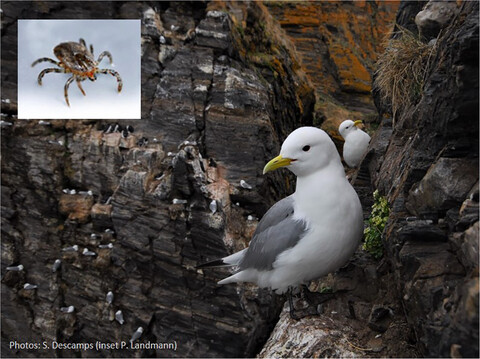
We examine whether recent observations of Ixodes uriae ticks infesting breeding seabirds in the high Arctic represent a recent poleward expansion of the parasite due to climate change. Surprisingly, genetic data suggest that these ticks have been present in the region for some time, maintaining high local diversity despite the harsh environmental conditions, and vectoring infectious agents among breeding birds. Indeed, we demonstrate the presence of the Lyme disease spirochaete Borrelia garinii in ticks of the high Arctic for the first time.
Tracing the future of epidemics: Coincident niche distribution of host animals and disease incidence revealed climate-correlated risk shifts of main zoonotic diseases in China
- First Published: 07 April 2023
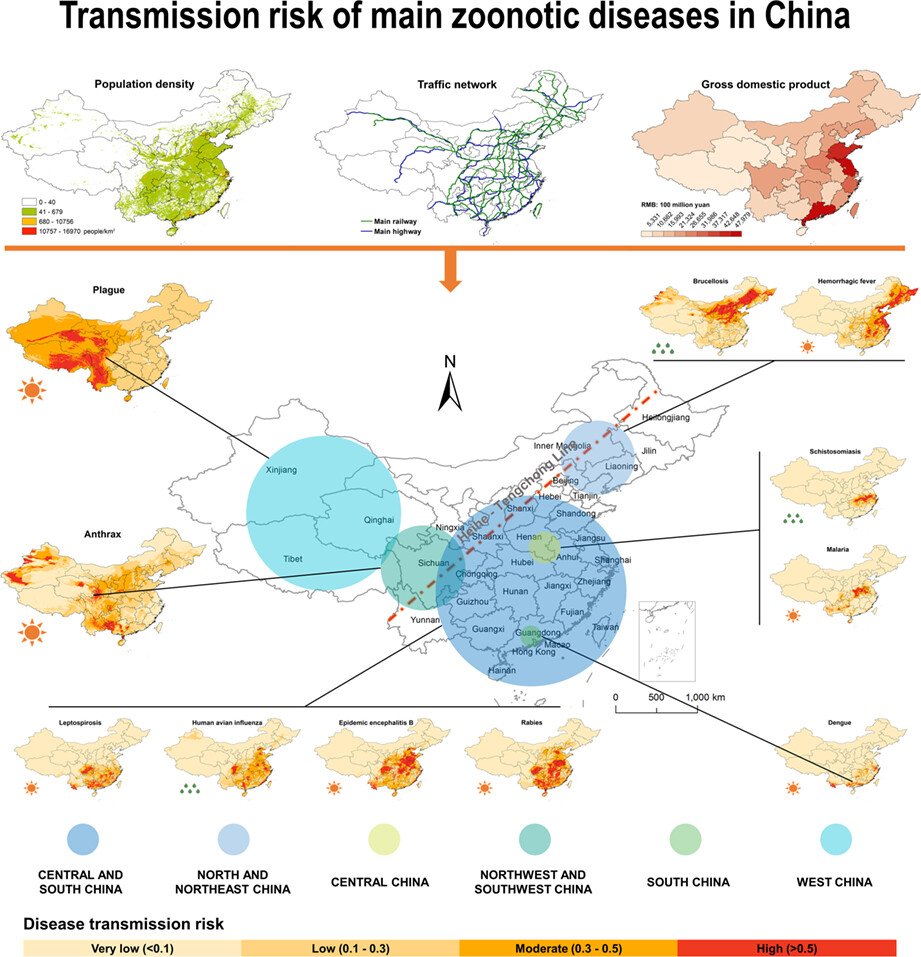
Climate has critical roles in the origin, pathogenesis and transmission of zoonotic diseases. Here, we first shape the transmission risk map of main zoonotic diseases in China using integrated Maxent modeling. We find that Central China, Southeast China, and South China are concentrated regions with high transmission risks. Furthermore, zoonotic diseases have diverse shift patterns of transmission risks including increase, decrease, and unstable under future climate change. These patterns of shifts are highly correlated with global warming and precipitation increase. Our results reveal how specific zoonotic diseases respond in a changing climate, thereby calling for effective administration and prevention strategies.
Socio-ecological drivers of multiple zoonotic hazards in highly urbanized cities
- First Published: 09 December 2021
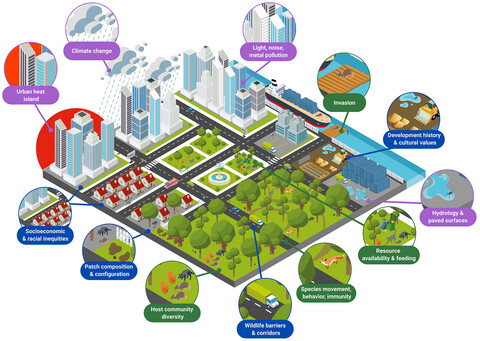
Effectively identifying and managing zoonotic hazards requires understanding the socio-ecological processes driving hazard distribution and pathogen prevalence in dynamic and heterogeneous urban landscapes. Here we discuss how landscape patterns, abiotic conditions, and biotic interactions influence zoonotic hazards across highly urbanized cities (HUCs) in temperate climates to promote their efficient and effective management by a multi-sectoral coalition of public health stakeholders. Using New York City, USA as a case study, we identify major zoonotic threats, apply knowledge of relevant ecological factors, and highlight opportunities and challenges for research and intervention.
Thermal limits in the face of infectious disease: How important are pathogens?
- First Published: 25 June 2021
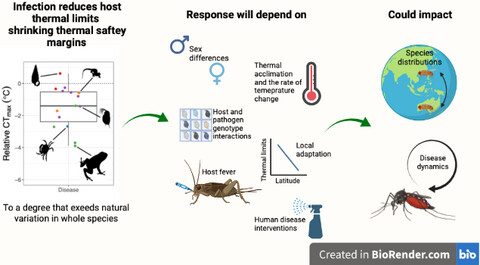
Thermal limits are important for species distributions and disease dynamics. We review the literature to show how infection may be a widespread and significant source of variation for host thermal limits, which could reduce host thermal limits to a degree equal to the variation seen across widely distributed species. We then discuss various sources of heterogeneity within and between populations that could mediate these responses, including: the rate of temperature change, prior thermal experience, host sex, host and pathogen genotypes, and local adaptation.
Worldwide impacts of landscape anthropization on mosquito abundance and diversity: A meta-analysis
- First Published: 15 September 2022
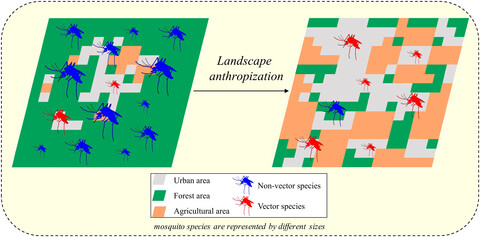
Understanding how land-use changes affect mosquito abundance and diversity is a step towards a better understanding of vector-borne pathogen dynamics in human-modified landscapes. In this meta-analysis, we highlight that urbanization, deforestation, and agricultural development lead to a general decline in mosquito diversity and a decrease in most mosquito abundance, favouring the only species adapted to human-modified landscapes. These few species are confirmed vectors of multiple human pathogens. This thus suggests a higher human risk of vector-borne diseases in more anthropized areas.
Plague risk in the western United States over seven decades of environmental change
- First Published: 18 November 2021
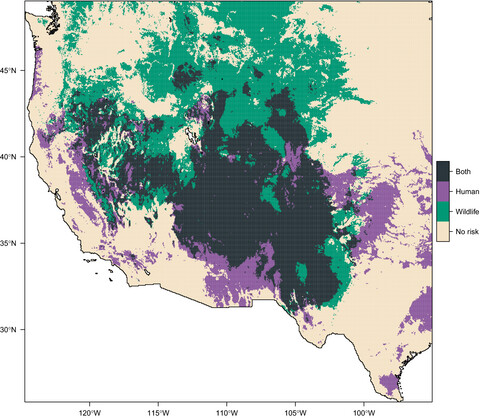
The impacts of climate change on human and wildlife health remain poorly understood. Carlson and colleagues develop a new method for reconstructing these impacts, and show that since 1950, environmental conditions in the western United States have become more favorable for plague (Yersinia pestis), including both its maintenance in wild mammals and spillover risk for humans.
West Nile virus is predicted to be more geographically widespread in New York State and Connecticut under future climate change
- First Published: 15 August 2021
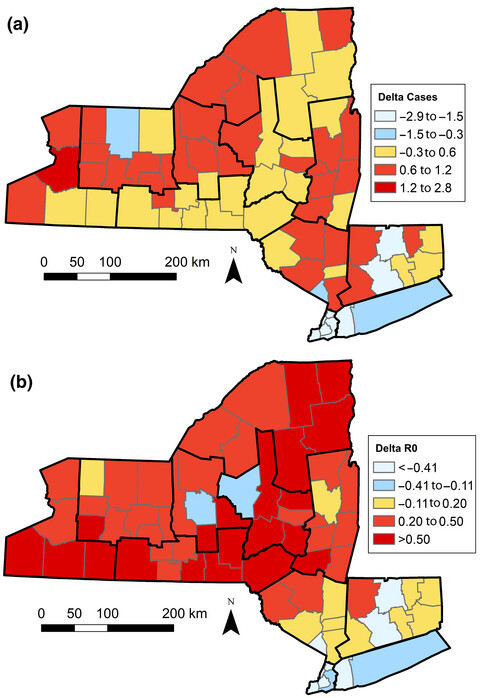
West Nile virus (WNV) is a mosquito-borne virus that has caused over 2200 deaths in the United States since 1999. Our modeling results estimate that warmer temperatures will result in more geographically widespread human disease cases in New York and Connecticut by the end of the century under future climate change (Representative Concentration Pathway 8.5). While total human case numbers are predicted to increase in these states, some areas, especially those which are currently experiencing high numbers of cases or high mosquito-based risk, are predicted to have fewer cases and lower mosquito-based WNV risk.
Mammal assemblage composition predicts global patterns in emerging infectious disease risk
- First Published: 02 July 2021
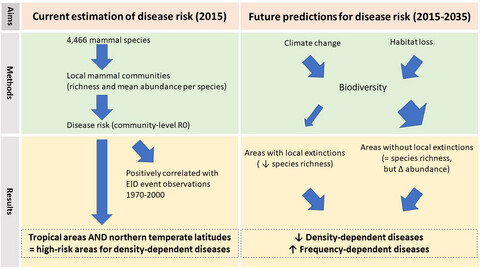
Emerging infectious diseases are serious global threats. Most of these diseases originate from wildlife, particularly mammals, which face an ongoing biodiversity crisis. Using predicted distributions and abundances of 4466 mammal species, we estimated global patterns of disease risk by calculating community-level R0. High values in temperate European, Asian, and North American locations point to risks beyond the tropics. Forecasted effects of climate change and habitat loss from 2015 to 2035 suggested many mammal assemblages will change considerably in their composition, even without local extinctions. Simultaneously, most areas were predicted to have decreased density-dependent disease risk but increased frequency-dependent disease risk.
Climate drives the spatiotemporal dynamics of scrub typhus in China
- First Published: 02 September 2022
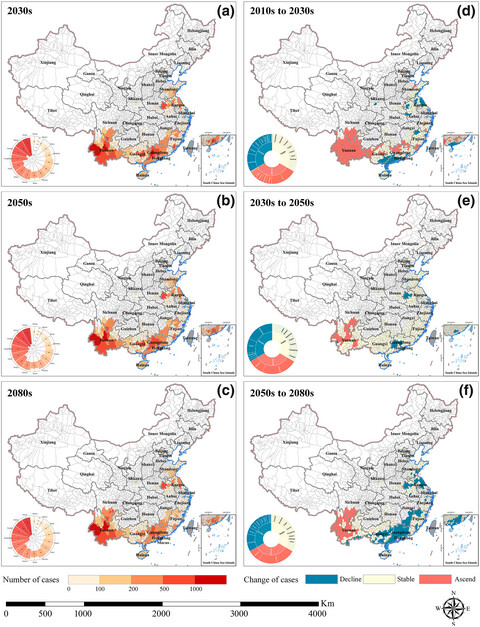
By combining Chinese national surveillance data on scrub typhus from 2010 to 2019 with a climate-driven generalized additive mixed model, this study explained the spatiotemporal dynamics of this disease and predicted how it may be affected by climate change under various representative concentration pathways for three future time periods. We found that the change of projected spatiotemporal dynamics of scrub typhus will be heterogeneous and will depend on specific combinations of regional climate conditions in future climate scenarios. This is valuable for helping public health authorities refine their prevention and control measures to reduce the risks resulting from climate change.
Conservation needs to evolve to survive in the post-pandemic world
- First Published: 01 June 2020
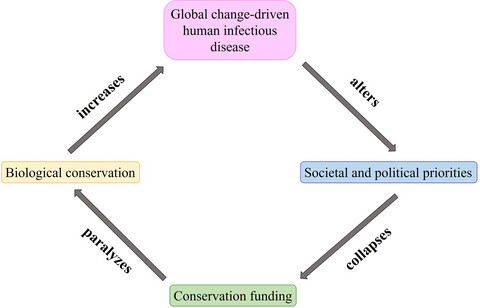
The conservation of biodiversity—and the vital ecosystem services it generates—is one of the greatest challenges humanity faces, yet the field faces drastic funding cuts as society realigns its priorities in the face of the COVID-19 pandemic. Here, we argue that diverting attention from conservation would, however, increase the risk of further global health crises because the emergence of novel infectious diseases is partially driven by global environmental change. As the discrepancy between conservation needs and society's willingness to pay for them grows, conservation will have to evolve to stay relevant in the age global change-induced human infectious disease.




